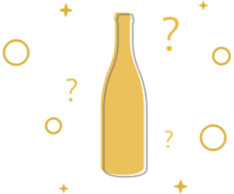Still wines are most commonly divided into two camps: dry and sweet. Sure, there’s some confusion regarding sugar-to-acid ratios and what constitutes “sweet” rather than “aromatic,” but overall, descriptors for still wine are fairly straightforward.
Bubbles, on the other hand, have a far more complex classification system. There are seven standard sweetness categories for sparkling wines: brut nature or brut zero, extra brut, brut, extra dry, sec, demi sec and doux. Each class denotes subtle differences in aromas and flavor.
These varying sweetness levels come from the dosage or liqueur d’expedition, a mix of sugar and wine. This liquid is used to top off Champagne and other traditional method sparklers after riddling, when winemakers disgorge the lees (dead yeast cells) from the neck of the bottle.
The dosage mix can contain anywhere between 500 and 700 grams of sugar per liter, although just a teaspoon or so ends up in the bottle. The precise ratio of sweetener-to-wine varies according to the producer, region and desired outcome, among other factors.
Some producers use a sweeter liqueur d’expedition, while others choose not to sweeten their wines at all. Many of the driest sparkling wines, sometimes labeled “zero dosage,” contain no dosage at all, using an identical wine to fill up the empty space in the bottle after disgorgement.
“It can be confusing at first, especially since the flavors can seem very similar between levels, like brut nature to brut,” admits Evelyn Goreshnik, wine director of California’s Last Word Hospitality, referring to the driest end of the sparkling wine sweetness spectrum.
So, how, exactly, do you know what to expect in a bottle of bubbles? We’ve got you covered. Here’s a guide to decoding the varying levels of sweetness in sparkling wines.
Why Are Sweetness Levels in Sparkling Wine so Confusing?
The French Champagne classification system and its legal framework has been around for almost 100 years, and these laws have been layered on top of one another, replaced or revised countless times. There were even riots over Champagne laws—troops were called in to quell uprisings.
While dry sparkling styles dominate most modern wine lists, Danya Degen, wine director of Méli in Washington, D.C., points out this wasn’t always the case.
“When Champagne production hit its stride in the 19th century, the product was sweet,” she says. “Adding sugar was how winemakers could cover up flaws in wines made from less desirable grapes.”
Back then, most Champagnes were sweet enough to fall under what we would classify as “sec” today, with at least 20 grams of sugar per liter and well beyond (over 100 grams) for bottles exported to Russia.
But, starting in the mid-1800s, the drier, brut style started to gain popularity. At the time, the term “brut” referred to wines containing less than 20 grams of sugar per liter, but the now strictly regulated term indicates up to 12 grams per liter of sugar in a bottle.
Classical Champagne has such a low pH (high acid) that without adding a little sugar to it, it would be basically undrinkable. Think of straight lemon juice versus lemonade.

What Sweetness Level Is Best for You?
Degen likes to point guests towards tartness instead of sweetness, “especially since many drinkers have decided they don’t like sweet wines,” he says. “Apples are a great point of reference: I liken brut nature sparkling wine to Granny Smith, which are puckery and teeth-pulling sour. Extra brut feels like a McIntosh and Brut is for the Pink Lady/tart red apple fans.”
Or consider what you’re eating. “Oysters or fish and chips are my go-to with brut nature,” says Degen. “Brut can handle foods with more herbs and spice, like souvlaki or bar fare, because that slight amount of sugar creates balance. Extra-dry, dry and demi-sec wines can handle even more of that herb-spice combo, plus they can be paired with dishes that have some sugar—like barbecue, curry or even lighter fruit-based desserts.”
Here’s a breakdown of the different terms and styles:
Brut Zero/Brut Nature
“Brut zero” and “brut nature” wines are the driest of the bunch with less than three grams of sugar per liter. This category, which also includes the terms “sauvage” and “zero dosage,” indicates that the wines contain only natural residual sugar with no dosage added to the bottle.
These wines are crisp, dry and refreshing with a very low sugar content. They pair refreshingly well with oysters and raw seafood, and can also cut through fattier dishes. It’s a great food Champagne for moving through an entire meal.
Wines with no dosage are described as “more linear, lacking bready Maillard-y notes, and generally want to be drunk earlier rather than aged. Many call these naked examples of Champagne—they’re more reflective of terroir.
Spanish Cava and Corpinnat producers also use the term “brut nature” to describe this style of wine. In German Sekt, it is known as “naturherb.”
Extra Brut
In Champagne as well as Spanish Cava and Corpinnat, “extra brut” (or “extra herb” in German Sekt) is the second driest level of sweetness, containing under six grams of residual sugar.
These wines pair well with tangy goat cheese, oysters or anything briny. However, they also work well to cut through richer foods like mushroom bisque, ricotta gnudi or a fully-loaded baked potato—bacon and all.
Brut
“Brut” is the most common style of Champagne, but one of the most confusing. To be labeled a brut wine, a sparkler must contain less than 12 grams per liter of sugar. That’s a broad range (and technically includes both brut nature and extra brut), so this popular category tends to vary widely in sweetness levels.
For some producers, brut wine can barely contain sugar, while others prefer to push the maximum amount of dosage. Brut really varies stylistically by house.
Because of the small hint of sugar, brut wines can be drunk throughout the entire night without overpowering any dish—even fattier and richer dishes. If you just don't want an incredibly dry and acidic champagne like a brut nature, this is your guy.
The term and style also apply to Spanish Cava and Corpinnat. In German Sekt’s, the style is referred to as “herb.”
Extra Dry
Contrary to what its name suggests, ‘extra dry’ is actually slightly sweeter than brut.
Also known as “extra sec,” wines at this level contain between 12 and 17 grams per liter. It has a touch more sweetness on the palate while still maintaining a refreshing acidity.
Extra sec can still have the general perception of being mainly dry, while having a higher level of sugar presenting it as fleshier and riper in style.
In Spain, extra sec is called “extra seco.”
Sec
Sparkling wines labeled “sec” contain between 17 and 31 grams per liter of residual sugar. This style is noticeably sweeter than extra dry, with a perceptible sweetness that balances the acidity. It pairs well with fruit-based desserts, light pastries or spicy dishes.
Sec translates to “seco” in Spain. In Germany and Australia, sec is labeled as “trocken.”
Demi-Sec
You can start to detect the texture of sugar on your tongue when it comes to wines labeled “demi-sec” or Spanish “semi seco,”. Containing between 32 and 50 g/l of sugar, one glass of demi-sec Champagne or semi seco Cava boasts as much sugar as a gin and tonic.
Doux
This is the sweetest style of Champagne with the highest sugar content, usually over 50 grams per liter. It’s very sweet and is often used for special occasions and dessert pairings.”
Doux sparkling wines are quite rare. So, make sure to pick up a bottle to try, if you’re lucky enough to spot one on a shelf.

